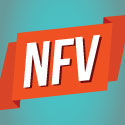The Real NFV Revolution Is 5 Years Away
First-generation virtualization is unlikely to bring about dramatic change for an operator's business. For that, operators may need to look to microservices.

Revolutions do not always have revolutionary outcomes. Monarchs were back on the thrones of England and France not many years after the upheavals that first toppled them. In Russia, the 1905 uprising led to the installation of the Duma, or Russian parliament, but Russians would have to wait another 12 years for the revolution that swept the old regime away.
So it could be with NFV. Skepticism is growing that the first wave of investment in software and virtualization technologies will produce a new telecom order. "If you look at first-generation virtualization, there is not really a lot of automation going on," says Caroline Chappell, practice leader, cloud and NFV, at Heavy Reading . "Operators can still use a lot of their old systems and processes and it's not resulting in the extreme business benefits."
Operators themselves are now playing down expectations surrounding cost. SDN and NFV technology is "not about savings," France's Orange (NYSE: FTE) told Light Reading during a recent conversation. Executives from Deutsche Telekom AG (NYSE: DT) and Verizon Communications Inc. (NYSE: VZ) were similarly downbeat at last week's MPLS/SDN/NFV World Congress in Paris. But other benefits might also be limited, according to Chappell. (See Orange Sours on Cost Benefits of NFV and DT: We Need SDN, NFV to Battle Web Giants.)
"It will give them much more agility than they had, but first-generation virtualization does not on its own deliver OTT [over-the-top] speed to market," she says.
Figure 1: Telcos of the World, Unite!  Executives from the first of two service-provider debates at MPLS/SDN/NFV World Congress, including (from left to right) AT&T's Maria Napierala, Verizon's Chris Emmons, Colt's Mirko Voltolini, Deutsche Telekom's Axel Clauberg, Orange's Francois Bertret, NTT's Kohei Shiomoto and Telecom Italia's Paolo Fasano.
Executives from the first of two service-provider debates at MPLS/SDN/NFV World Congress, including (from left to right) AT&T's Maria Napierala, Verizon's Chris Emmons, Colt's Mirko Voltolini, Deutsche Telekom's Axel Clauberg, Orange's Francois Bertret, NTT's Kohei Shiomoto and Telecom Italia's Paolo Fasano.
For those extreme business benefits, operators may have to go through a second virtualization revolution, introducing what is being called a "microservices" architecture into their networks. In this set-up, a network function would be decomposed into small individual components that an operator could reuse and recompose in many different ways to create customized, scalable applications. "This is real cloudification," says Chappell.
Some of the world's biggest telcos now have microservices in their sights. During a panel debate in Paris, David Hughes, a vice president of engineering at Hong Kong's PCCW Ltd. (NYSE: PCW; Hong Kong: 0008), told attendees that operators would have to move this way to cope with growing customer demand for services that meet very specific requirements. Spain's Telefónica also sees the attractions of using microservices to provide more niche and personalized offerings to its customers.
"When you are dealing with 'head' services it makes sense to have big fat machines," says Diego Lopez, a senior technology expert with Telefónica. "When you are trying to address the long tail you need to go for smaller elements that are faster to deploy and easier to reconfigure."
For more NFV-related coverage and insights, check out our dedicated NFV content channel here on Light Reading.
But instigating a microservices revolution might be an even taller order than the initial deployment of SDN and NFV. The uncertainty is whether it will roll on naturally from the first virtualization wave or represent another "discontinuity," as Chappell expects. "First-generation virtualization does not really tackle any of the cloud-native challenges," she says. "At some point there will be another major change."
Service providers are understandably wary. Asked in Paris when he expected to see the first microservices deployments by telcos, PCCW's Hughes cautiously volunteered 2020 as a likely date. Peter Willis, chief researcher of data networks for the UK's BT Group plc (NYSE: BT; London: BTA), reckoned it would be 2021 before they happen. "There is clearly a cost because microservices expose a lot of interfaces externally and create issues around complexity and performance," he says. "But there could certainly be advantages in terms of improving scalability and making it easier to carry out upgrades."
Another obstacle could be vendor unwillingness to support microservices deployments. "There is very little incentive for the vendors to do this because they have got investments in a huge amount of code in existing products," says Chappell.
Indeed, while some operators are putting pressure on vendors to adapt, the development of microservices could have enormous ramifications for the vendor business model. Monolithic network functions priced at a premium would be broken down into what Chappell calls "pinpoint" features carrying much less value. Operators would require only one instance of each feature. "The business model of software is changing," says Chappell. "What you get is much faster innovation, but you also destroy the value in the existing products."
For service providers, one of the biggest challenges of all may be organizational and cultural, rather than technological. Telcos are increasingly talking about having to introduce "DevOps" methodologies into the workplace -- to operate and innovate like fast-moving software companies -- as they redesign their networks. "The whole thing with SDN is making networks look like software, and so we're having to retool the organization to make it look like a software shop," says PCCW's Hughes. (See Telecom Italia Not Ready to Transform, Admits Exec.)
Those DevOps needs may be even more pressing with a microservices architecture, forcing operators to retrain employees, overhaul internal processes and devise new business models. The revolution may be a few years coming, and a messy affair when it arrives, but the cloudification promise makes it an upheaval the industry will not be able to avoid.
— Iain Morris, 

 , News Editor, Light Reading
, News Editor, Light Reading
About the Author(s)
You May Also Like




_International_Software_Products.jpeg?width=300&auto=webp&quality=80&disable=upscale)







